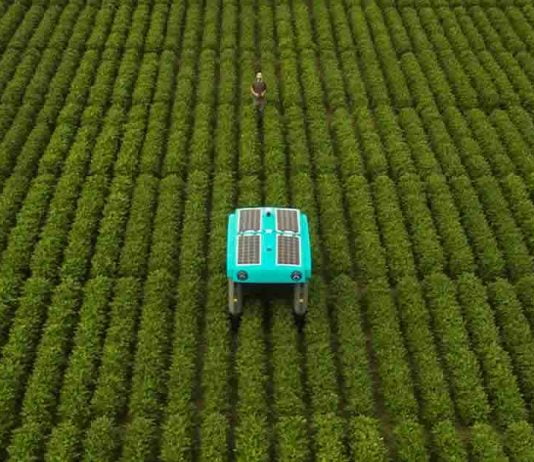While the world population keeps steadily growing, the need for food also increases. To feed such a large number of people, the sphere of agriculture must radically change and become less of an economy and more of a large-scale production. For that, the farmers will primarily need new ways of monitoring big fields more efficiently. And this can be achieved only by the implementation of new technologies to farming practices. Down below we will go through the most popular of such innovations.
Precision Agriculture
Precision farming is a breakthrough trend in agriculture, which combines most of the top farming technologies. The principle of precision farming is based on the idea that the cultivated area is not homogeneous, and that each individual zone requires unique care. In practice, this translates into cost minimization. Thanks to the use of ground sensors, as well as satellite and aerial images, it is possible to use fertilizers, water, and pesticides only where needed. Besides, there are agricultural robots that help to automate the routine field work: plowing, planting, weed control, watering, fertilization, and harvesting.
Speed Breeding
Another popular trend in agriculture is the development of new crop varieties. For instance, the development of perennial crops that will reduce the cost of fertilizers and herbicides. To achieve this, the selection process has to be significantly accelerated. The technique behind this is growing plants under continuous light for 20-22 hours a day to allow them photosynthesize longer and grow faster.
Renewable Energy
The use of renewable energy sources has long been a trend in many industries beside agriculture. So, how can it be applied to farming? A good example would be wind farms and solar panels installed in rural areas to power agricultural robots. Renewable energy used in farming can help reduce the cost of solar energy by 75% and thereby reduce the cost of products.
Vertical Gardens
This agro innovation is about transferring high-tech agriculture to urban areas by creating vertical farms that do not require a large area of layout and allow harvesting all year round. Such experimental farms already exist in the yards and on the roofs of residential and office buildings in big cities.
Sensors
Modern smart systems for plant care already help to water and fertilize seedlings automatically, taking into account every nuance. This technology, which saves up to 20% of water, falls under the concept of smart farming, accurately calculating watering, fertilization, pesticides application, and harvesting via computer systems. Modern sensors also analyze the composition of the soil and predict its fertility, as well as the degree of saturation with moisture and fertilizers.
GPS- Navigation
GPS navigation systems in farming allow the exact location of tractors and other agricultural equipment to be identified, down to centimeters. Thanks to this technique, farmers do not have to cultivate the same plots twice and will not miss the spots that require special treatment.
This approach reduces fuel costs and makes for more efficient use of fertilizers, herbicides, and pesticides. Many farms create productivity maps, using GPS technology. These maps show the variety of productivity levels within a single field.
Satellite Monitoring
One of the biggest trends in agriculture today is the use of satellite imagery for field monitoring. This is especially useful when managing several fields at once or large and remote areas of land. For that purpose, there are plenty of online tools. One of those is Crop Monitoring by EOS.
The platform enables remote monitoring of fields based on satellite data. The information is extracted and automatically analyzed by the platform on-the-fly. All farmers have to do is to open the app and see all the collected data on one screen. The tool allows users to add multiple fields for monitoring. Data analysis provides information on crops heath (based on vegetation indices) and weather trends (historical, current, and 14-days forecast).
Besides, the tool has an option of sorting out fields by productivity: the field with the highest vegetation value (NDVI) makes it to the top of the list. The fields can also be divided into zones, based on advanced vegetation indices, allowing growers to perform fertilizer & seed scripting and precise pesticide application.
What’s more, users manage scouting tasks remotely: create a task, send a scout, monitor task completion. This is especially convenient thanks to team accounts. Besides, it’s much easier and more efficient to scout fields based on the accurate data about problem areas within the field already available on the screen. The farmer can select the exact place on the field that needs to be inspected and sends the scout there, saving time and human resources.
Farm-management Systems
According to the article by The Economist, business models in agriculture are also changing. More and more farmers are starting to use software platforms that act as farm-management systems. A number of startups offer agricultural management systems in different formats, allowing online access to actionable data retrieved from sensors, satellites, and other sources.
Drought-tolerant Plants
Growing plants requires huge water consumption, while global warming simultaneously forces people to find ways of decreasing water use. This has led to the current attempts by the breeders to develop varieties of popular plants that will produce high yields even in dry conditions.
Drones
Agriculture is already one of the largest spheres where people apply industrial drones in their work. Approximately, every 10th agricultural enterprise uses these devices. Drones can provide soil analysis data, record seedling density indicators, determine the area of dead crops, and help solve many other tasks related to monitoring and mapping of cultivated areas. The development of drones will further expand their usage in agriculture, including a highly-efficient monitoring of spraying and irrigation.
Overall, agricultural innovations are the vectors of development for farmers. Different technologies and tools expand the opportunities for more productive, eco-friendly, and cost-efficient farming.
